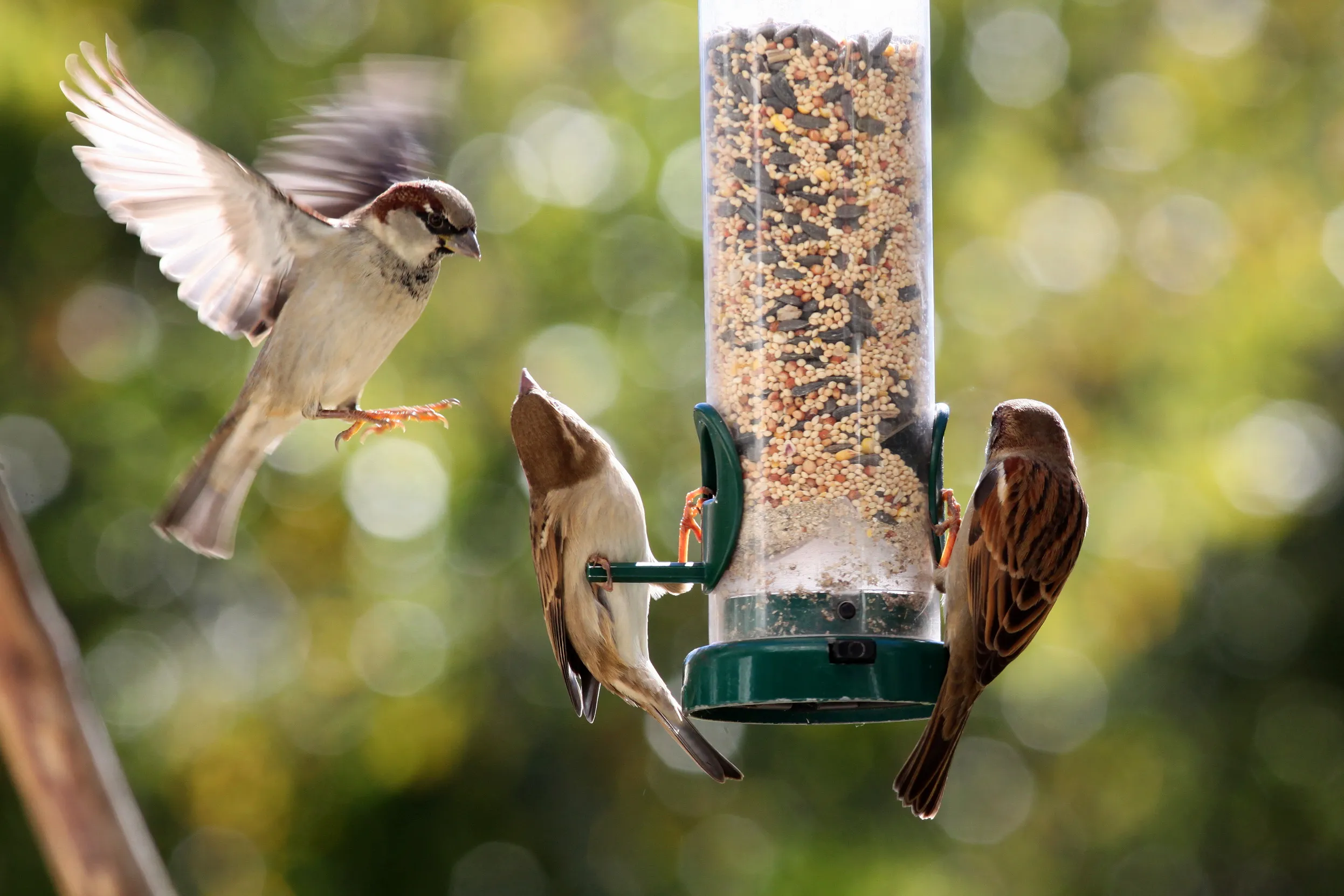Here are some food you should put out.
- Bird cake and food bars
- Seeds mixes
- Sunflower seeds or heart
- Nyger seeds
- Live foods and other insect foods, like meal worms
- Lard and beef suet
- Cooked rice
- Uncooked oats
Bring birds to your garden by putting out food for them. Appreciate their colours and fascinating behaviour, and attract them to your garden year round. It’s an easy activity to get kids excited about nature, and gives you a little wildlife joy from your window.

You should get the fastest results from putting up feeders in winter, but it’s great to leave food out all year if you can.
If you're looking for some bird food, take a look at the RSPB online shop, where we sell lots of good quality bird food.
First up, there are some foods you should never put out.
Poor quality peanuts can carry the aflatoxin fungus, which kills birds if they eat it. Make sure you buy peanuts that are guaranteed aflatoxin-free from a reputable supplier.
Here are some food you should put out.
Invest in quality feeders to keep food dry and stop it going off.
Fill the holes and cracks of a post or suspended log with fatty food, such as suet, for agile birds, such as tits, Nuthatches, woodpeckers, Treecreepers and even Wrens.
Thrushes and Dunnocks prefer to feed on the ground. For these birds, lightly scatter food on the lawn well clear of cover to avoid lurking cats. Remember to change the area you scatter the food over every few days, and never put out more than is likely to be eaten the same day.
If you put food such as apples on the ground, space it out in different places in the garden. This will reduce competition between birds so that more birds can feed at any one time. If there is snow on the ground, clear small areas before putting down the food.
Peanuts and fat balls are regularly sold in nylon mesh bags. Never put out any food in mesh bags. These may trap birds’ feet and even cause broken feet and legs. Birds with a barbed tongue, like woodpeckers, can become trapped by their beaks.
Place the feeders high enough so they are out of reach of ground predators like cats. They should be a couple of metres away from thick cover like bushes, so that small birds can beat a hasty retreat from aerial predators such as Sparrowhawks.
If you don’t get any visitors, just try a different location. It's a good idea to move the feeders to different locations over the course of a year so that you don’t get a build-up of debris or droppings underneath.
Feed your birds all year if you can, but adjust the amount you put out. Feeding birds in the spring and summer may help them to raise their chicks more successfully. Remember, always put peanuts in a rigid mesh feeder, as large pieces of nut can choke baby birds.
There’s a lot more food available naturally in summer, autumn and even early winter, as flowers set seed and berries ripen.
Come winter, when berries and insects are scarce, your feeders should see lots of feathered visitors. Feed fat in the winter only, as fatty foods can go off in summer and birds don’t need high energy food as much in the warmer months.

Unhygienic feeding stations can quickly transmit diseases between birds. Wash them down with a mild disinfectant and hot water, rinsing fully and drying before filling with food
Rats, mice, squirrels, pigeons, and members of the crow family can wolf down what was meant for smaller birds. The best solutions are: